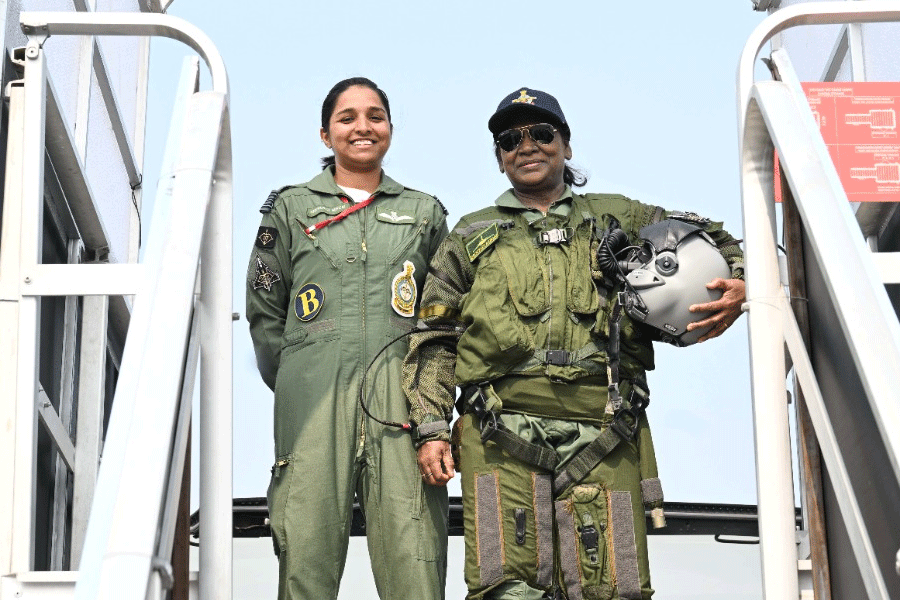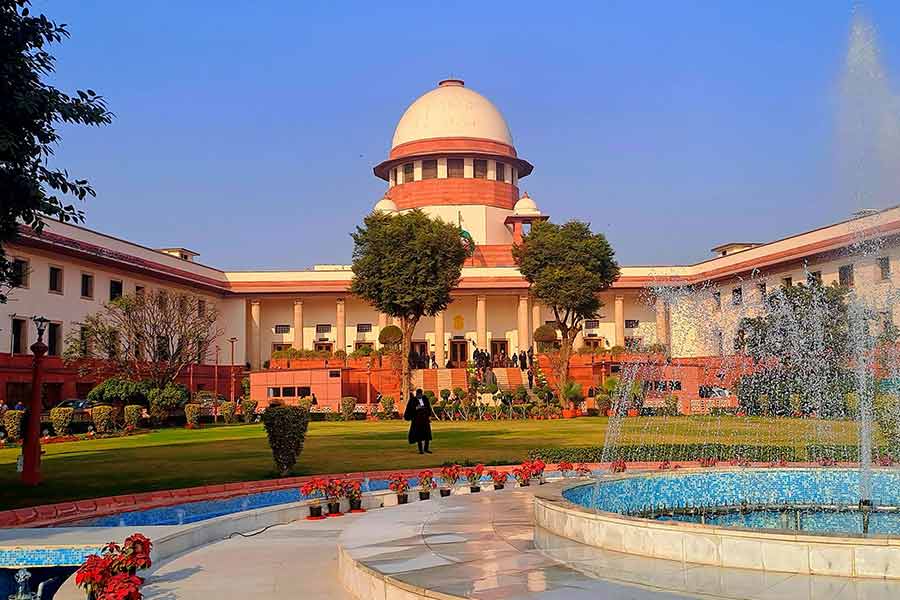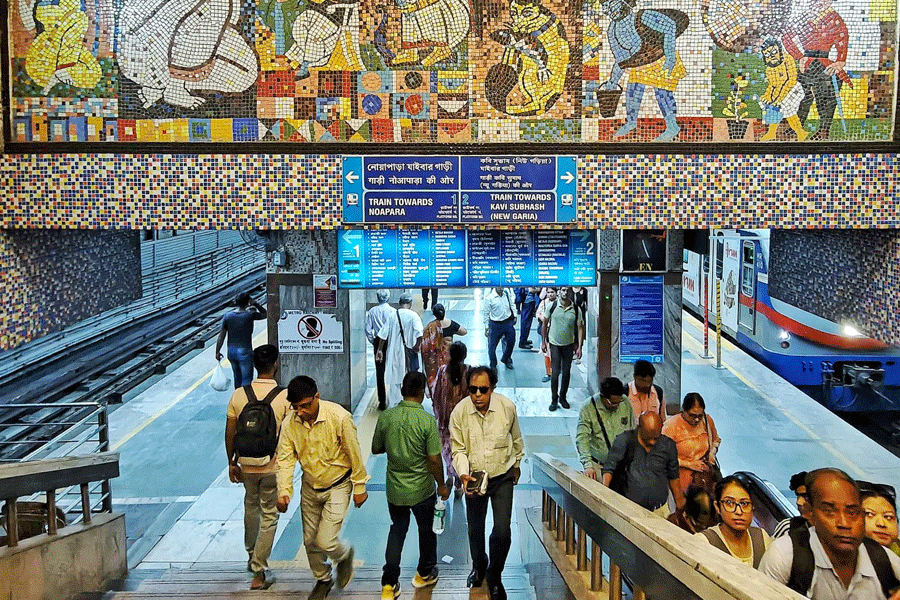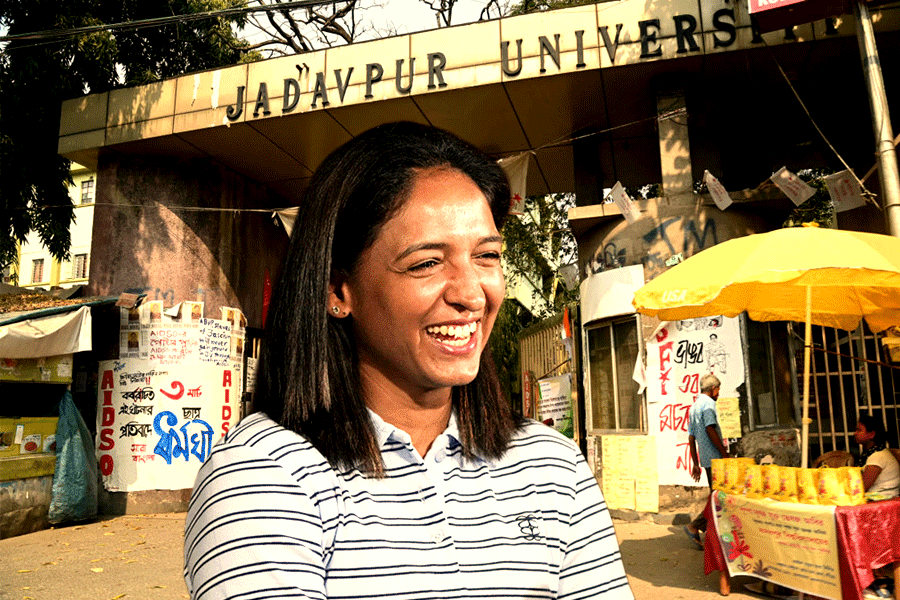 |
| Bharatnatyam dancer Priyadarshini Govind performs at the inaugural. Telegraph picture |
Arjuna’s Penance, the world’s largest bas-relief sculpture at the heart of this coastal village 55 km from Chennai, comes alive at sunset with a parade of Indian classical dance — Bharatnatyam, Mohiniattam, Kuchipudi, Odissi, Manipuri — as well as folk.
The Mamallapuram Dance Festival, which kicks off after Christmas every year, draws artistes from across the country to the village. The backdrop of the square open-air stage — a huge “whaleback shaped rock” depicting the penance of Arjuna — is the pride of Mamallapuram, a busy port on the Bay of Bengal during the reign of the Pallava kings, who ruled from 600 AD to 750 AD with Kancheepuram as their capital.
The Mahabharata’s “despondent warrior” is not alone, as this incredible sculpture, measuring 27 metres by 9 metres, contains many figures of gods, demigods, beasts and birds.
Till February 2, tourists can view two dance performances of one-hour each on all Fridays, Saturdays, Sundays and government holidays.
While domestic tourists and local residents can watch for free, foreign tourists pay Rs 100 a day. Some states, like Kerala and Bengal, are sponsoring a day’s event each at the festival, which is part of a tourism promotion effort by the central and Tamil Nadu tourism departments.
Whether it is famous dancers like Padma Subramaniam performing or the not-so-well known Anuradha Venkatraman (Bharatnatyam), former Telugu filmstar Manju Bhargavi (Kucipudi), Meera Das (Odissi), Gayatri Sharma (Shatriya Dance from Assam) or Sukla Datta Adak (Kathak), a visual treat unfolds day after day.
Since the dance festival became an annual feature in 1992, “tourist arrivals during this part of the year has been averaging a 10 per cent growth”, says a tourism department official. “Every day, about 300 to 400 foreign tourists watch this dance festival.”
“It is very beautiful and interesting and the dance festival is one of the attractions to come here,” said a French tourist, here with his family.
Typically, during the day, the tourists spend time seeing the rock-cut and monolithic monuments and the cave temples. The Five Rathas, five monolithic temples also known as the Pancha Pandava Rathas, have been scooped out of a single rock formation, archaeological experts say.
The Shore Temple that fringes the Bay of Bengal is one of the oldest in south India, dating back to the seventh century, and exemplifies the early phase of the Dravidian style of temple architecture. In the evenings, tourists flock to Arjuna’s Penance for the dance recitals.
Some outfits organise a bicycle ride everyday, particularly for foreign tourists, covering the must-see spots. Typically, they charge Rs 200 per person. This includes services of tour leaders, lunch and refreshments.
Scores of artisans chisel away a myriad mythological forms on granite in small pattrais (workshops) by the roadside all day.
The drive from Chennai to Mamallapuram takes less than two hours on the East Coast road, a tourist department official says. The nearest railway station is Chengalpattu junction, 30 km from Mamallapuram.
Though Mamallapuram has a limited number of upmarket beach resorts, it has about 10 guesthouses and lodges. From cheap lodging at Rs 75 per day, the room rent goes up to Rs 2,500 a day at the luxury resorts.
The place also offers a variety of cuisine, including north Indian and Chinese food. “We really like the food here, though coming from England we find the beach very dirty,” said a woman from Leeds.
Ronald Fugl, a civil engineer from Dresden in Germany, who is visiting Mamallapuram after eight years, says “the accommodation now is much better here than what it was eight years ago, though the place has become more crowded”.










